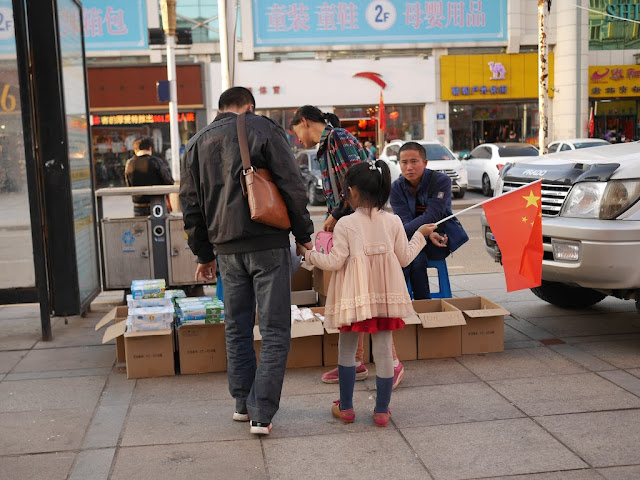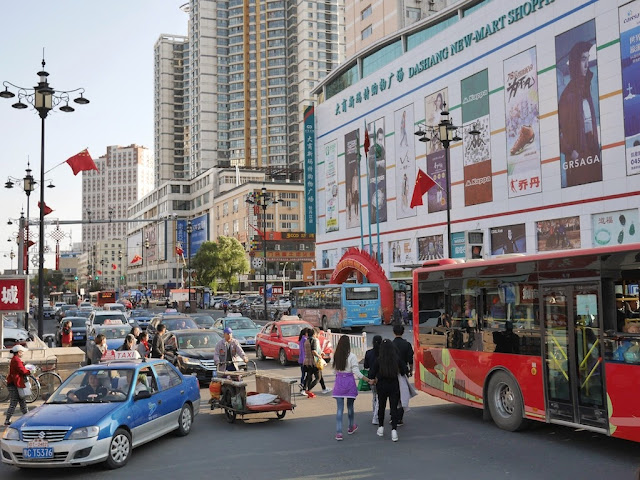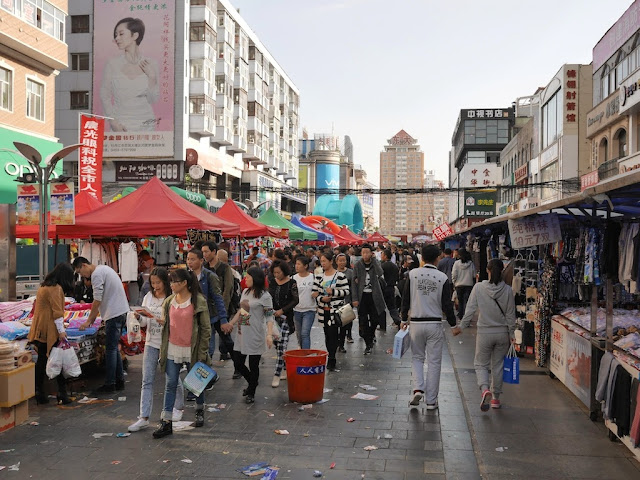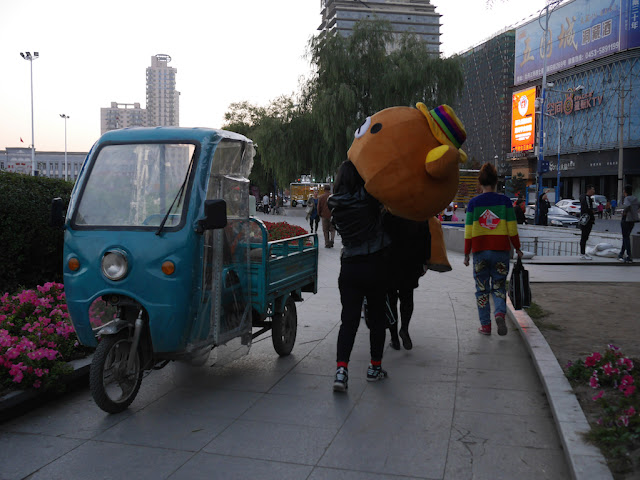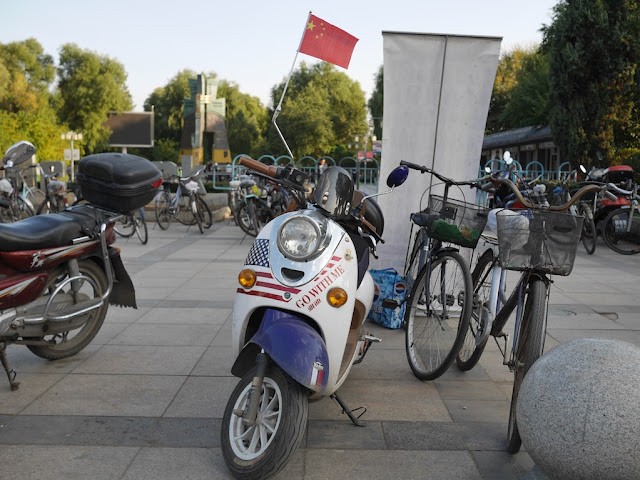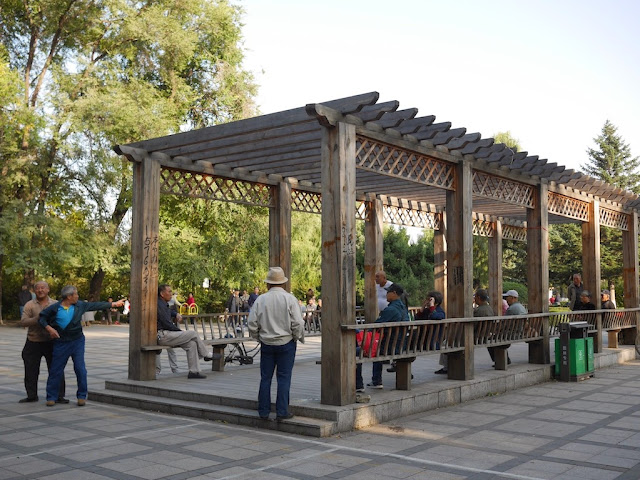Answering the question of what counts as "behind" for a shopping center sign in Mudanjiang would be aided by a closeup photo of the sign. I didn't share one before, so I will share one belatedly:
The Chinese character 国 (guó) is affixed to both sides of this particular metal grating. Three pairs of other characters are similarly affixed to three other gratings. As discussed in the earlier post, there are reasons to consider locations on either side to be "behind the sign" and there are reasons to say there are two signs.
So if somebody asks me to meet them in front of the large Guomao Shopping Center sign, I will just suggest we meet next to the 国.


